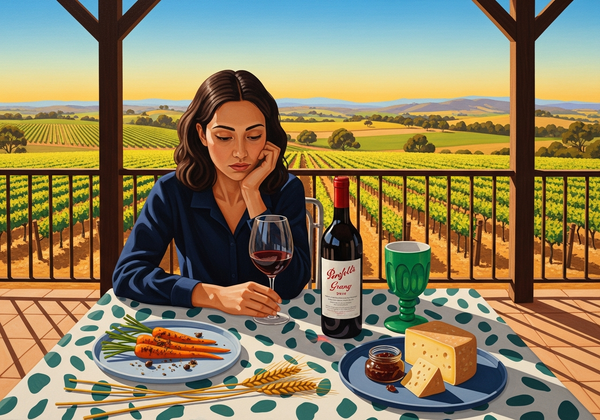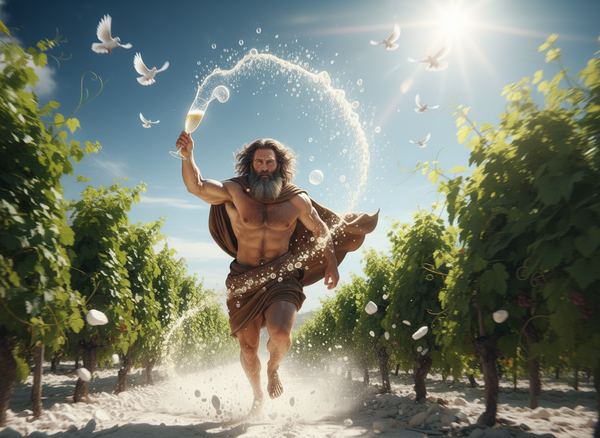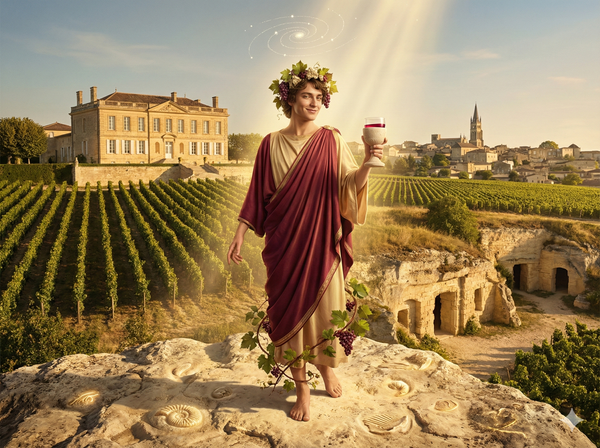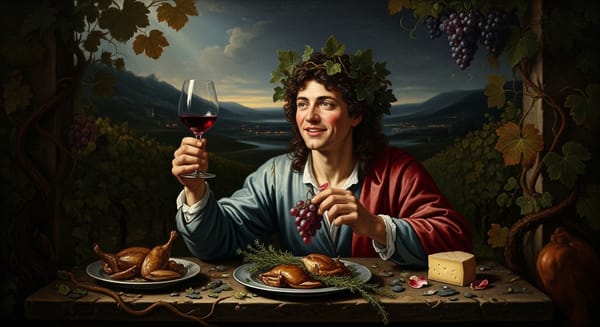2011 Douro: Schist & River Light That Shape Enduring Wines
Douro 2011 Vintage Port and Dry Red: A monumental year defined by schist and river light. The clarity and concentration of 2011, forged by cool nights, created world-class wines built for decades of graceful evolution. Essential guide for collectors.
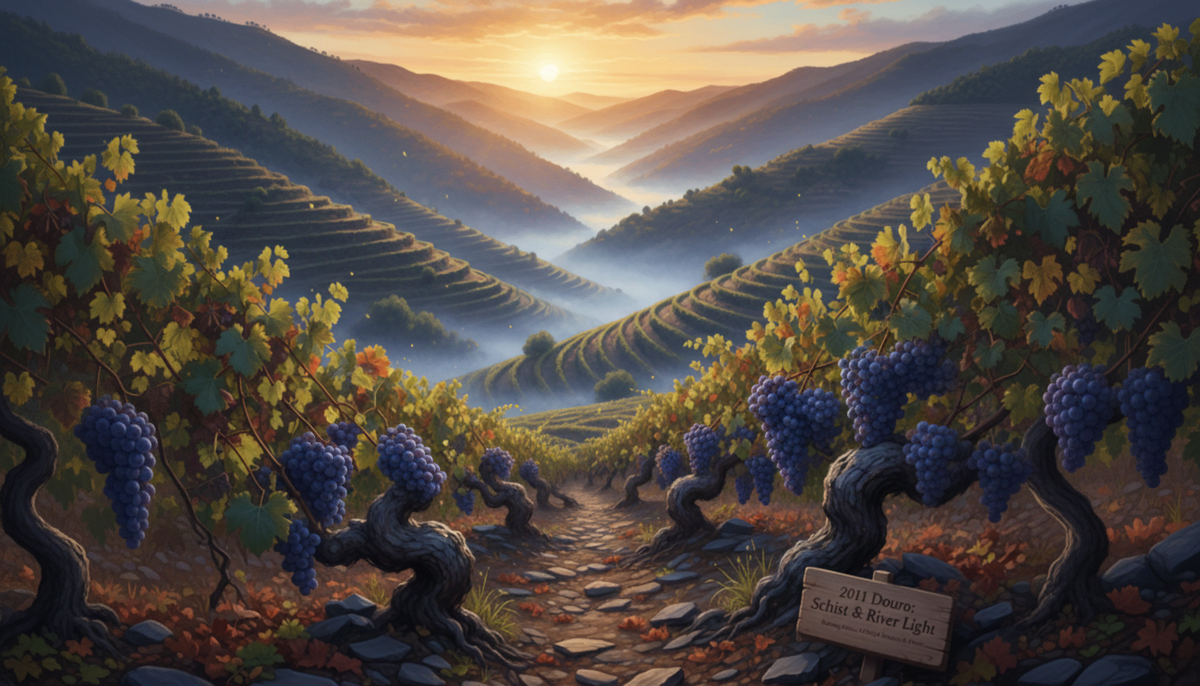
The Douro 2011 vintage was defined by a classic, steady arc. A necessary winter recharge led into a steady, unhurried spring. The summer was warm and sun-rich across the valley, yet it was the continuous presence of cooler nights, especially at altitude, that proved the year's salvation. The vines produced small, intensely flavored berries with thick, pristine bunches, retaining crucial acidity against the sun's insistence. The harvest was selective and unhurried through September and October. The stakes were met beautifully by nature’s hand: achieving profound density without heat, ensuring aromatic precision without austerity.
The Structure's Pledge: Long Life Chiseled in Stone
Is 2011 Douro worth aging? Absolutely, for both the dry reds and the declared 2011 Vintage Ports. This year is a modern Douro touchstone because it achieved a rare confluence of ripeness and delineation. The unique Douro landscape—schist terraces, altitude bands, and old vines—magnified the effect of the diurnal swing, forging wines that are ripe yet intensely focused. The result is fine, abundant tannin and brilliant site transparency. The Vintage Ports possess the energy for a 40+ year journey, while the Dry Douro reds—built on a similar backbone—will easily evolve for 15–25 years, with the best bottles going longer.
Decoding the Glass: Dark Fruit, Warm Stone, and River's Line
The core of the Douro 2011 vintage is a conversation between darkness and light. The initial sensory palette is unified: blackberry, black cherry, wild herb, violet, graphite, and the heat of warm stone. The mouthfeel starts with a cool entry, driven by an energetic line of acidity, while tannins range from powder-fine to firm-granular, resolving into a long, reverberating mineral close. The signature feeling is a river-bright line through slate haze, carrying both weight and clarity.
Dry Douro Reds: These show darker fruit polished by schist spice, bay leaf, and cocoa nib. Altitude provides a bracing freshness. The framing is provided by oak, but it acts as a subtle structure, not a costume.
Vintage Port: The expression here is concentrated: cassis and plum liqueur meld with dark chocolate, violets, and crushed rock. The sheer sweetness is carried by formidable tannin and acidity, ensuring the wine feels powerful, not heavy.
You can almost visualize the land itself: field-blend vines lean shoulder to shoulder, each grape offering a syllable to the sentence—a unified expression of the place.
Sub-Region Snapshot
The Douro 2011 vintage expressed itself differently across the river's three bands.
Baixo Corgo, closest to the Atlantic and historically cooler, produced elegant wines defined by redder fruit tones and a resinous wild herb lift, often succeeding beautifully in checks on naturally higher yields.
The heartland, Cima Corgo (Pinhão, Vale de Mendiz), delivered the density of the year. Here on the steep terraces, many of the top 2011 Vintage Ports were born, showing dense blue-black fruit, a signature schist bite, and powerful violet lift. This region delivered magnificent concentration.
Further inland, the Douro Superior is more continental, with fierce heat balanced by crucial cool nights. This region provided powerful dry red structures, deep dark fruit, and notes of wild herb and iron. The higher altitude and older vines here successfully preserved the vital acid line. The dark horse of 2011 were the high, wind-brushed field-blend parcels above 450–600m, which bottled an electric definition and striking finesse that transcended their label.
Style Spectrum
The complexity of Douro 2011 is partly a product of varied and precise winemaking decisions.
Dry Reds: Producers utilized both traditional granite lagares (shallow stone vats, historically for foot-treading) and modern stainless steel. The goal was gentle extraction, favoring techniques like gentle pump-overs to achieve color and perfume without harsh seed bitterness. Elevage (aging) in French oak, usually 225–500L, typically lasted 12–18+ months, with new oak usage carefully moderated. ABV commonly finished around 13.5–15%, where freshness became the telltale sign of quality.
Vintage Port: This process relies on foot-treading or mechanical lagares for rapid, thorough extraction. Fermentation is intentionally arrested with the addition of high-proof spirit, which captures the fruit's sweetness. After a brief rest in cask, the wines are bottled young for their long bottle evolution. The wine's blend is key: Touriga Nacional contributes shape and perfume; Touriga Franca adds structure and floral notes; Tinta Roriz provides backbone; Sousão ensures color and acid; and the old-vine field blends deliver complexity.
Producer Call-Outs
The best producers 2011 Douro succeeded by controlling the season's inherent power with precision.
Icons (Port & Dry): Taylor’s delivered a classic Vintage Port of immense power and structure. Fonseca excelled with opulent, expressive fruit. Dow’s achieved its signature drier, powerful style. Graham’s showed stunning richness and concentration. Quinta do Noval (incl. Nacional) produced wines of legendary focus. Niepoort (Batuta/Charme & VP) defined elegance in both the dry and fortified sectors. Quinta do Vale Meão mastered the dry red side with complexity and depth.
Value Plays (Dry & LBV/Single-Quinta): Quinta do Crasto (incl. Old Vines) delivered dense, compelling dry reds. Quinta do Vallado showcased balance and accessibility. Wine & Soul (Pintas) offered intense, site-specific dry wines. Quinta da Gaivosa provided excellent balance. Quinta do Vesuvio single-quinta Port offered a focused, cellar-worthy option.
Wild Cards: Poeira captured finesse and floral lift in its dry red. Conceito’s wines demonstrated electric altitude freshness. Romaneira and Quinta do Passadouro delivered concentrated, territorial expressions. Seek out high-altitude field-blend bottlings that over-delivered on finesse and acid line.
Drink-or-Hold Scorecard
The 2011 vintage presents two distinct, long-distance tracks for the cellar. The Dry Douro Reds will evolve faster, while the Vintage Ports require true patience.
Dry Douro Reds
- Early Charm (Now–2028): Village/entry blends, perfect now with their bright fruit and schist snap.
- Sweet Spot (2029–2042): Top old-vine and single-parcel wines, where tannins polish into quiet structure and wild herbs turn profoundly savory.
- Marathon (2043+): Select, firmly built bottles from higher sites will go the distance, rewarding slow-ox attention.
Vintage Port
- Early Peek (Now–2028): Best enjoyed with a long decant to experience the youthful, fiery fireworks of fruit and tannin.
- Sweet Spot (2029–2050): The primary integration phase. Tannin knits into velvet, and the primary fruit deepens, revealing violets, cocoa, and crushed-rock complexity.
- Marathon (2051+): The icons enter their tertiary calm—patience is rewarded with legendary serenity.
Final Reflection
The 2011 Douro is a truly monumental vintage, delivering on the rare promise of clarity and immense concentration across both fortified and dry styles. It is defined by its pristine structural tension, forged by schist stone, altitude, and cool nights, ensuring the wines are ripe yet intensely delineated. These foundational elements bless the best bottlings with a deep, complex, and seemingly endless journey for those with patience. Ultimately, 2011 provides world-class Dry Reds and Vintage Ports built for enduring grace.


